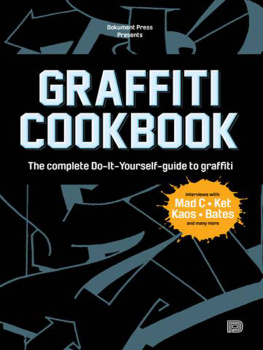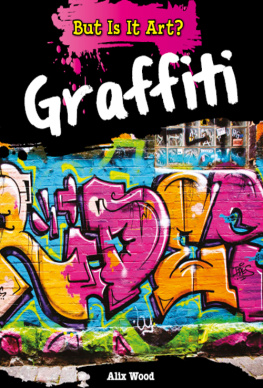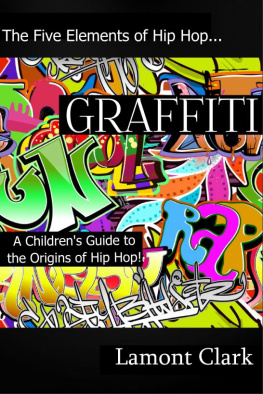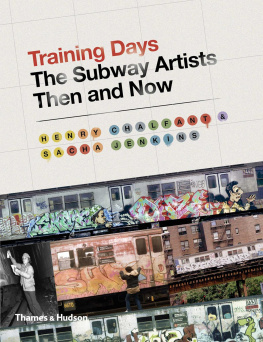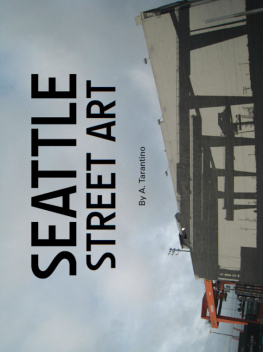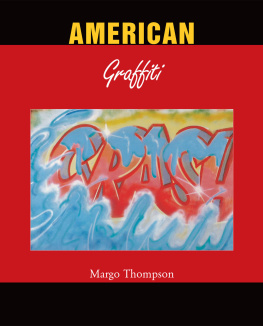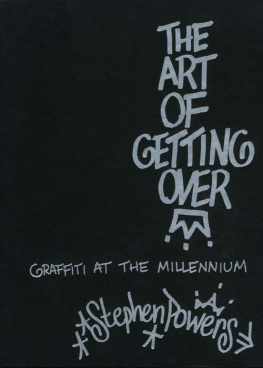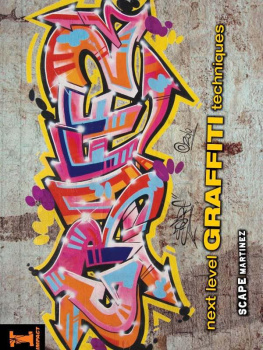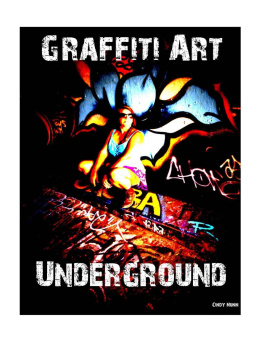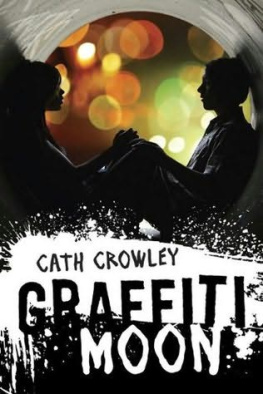INDEX:
In many countries, you need a proper authorisation to make art on other peoples property. Always make sure you have an authorisation before getting started.
2013 Dokument Press
First edition
Printed in Poland
ISBN 978-91-85639-60-1
Photo: See p. 132
Text: Bjrn Almqvist, Tobias Barenthin Lindblad,
Mikael Nystrm, Torkel Sjstrand
Foreword: Tobias Barenthin Lindblad
Translation: Martin Thomson
Graphic Design and illustrations: Martin Ander
Thanks to everybody who supported this book with their love, enthusiasm and knowledge.
Dokument Press
Box 773, 120 02 rsta, Sweden
www.dokument.org
C reating is fun. Its a kick to make something and then check it out: I did this! Creativity is what led our forefathers to improve their daily life. Creativity is the basis for the computer used for writing this text. The creative process is unending, since it is perfectible. When graffiti was new, few people could have foreseen its triumphant march across the world. Even fewer could have foreseen a creative development of almost fifty years.
Graffiti is short-lived. A piece often only exists for a short while before vanishing under layers of new ones. Unless, of course, its made on clothes, canvas or in a sketchbook. Then its life is prolonged. But finally, most graffiti will only be preserved in photographs or books.
Graffiti is a shared creative process. You learn by discussing styles, effects, techniques and materials with friends and relations. You collaborate around a theme or a piece. At the end, there is also an audience that will have opinions about the work.
Graffiti is an art form close to both music and dance, as well as other expressions like Chinese calligraphy and martial arts. Most writers repeat the same movement, the same shape, over and over again to gain a steady hand and create a personal style.
We, the writers of this book, all come from graffitis creative soil. We represent different generations of graffiti writers, but we all share the love of the swinging letters.
When graffiti was first circulated, it was among youths of the same age. The more experienced ones took beginners under their wings and acted as teachers or mentors.
Over time, the span of ages has grown. Today, the oldest writers in New York are in their sixties, and the youngest in their teens. The natural mentoring system no longer exists in the same way, since writers have become such a heterogeneous group.
Thats why we think the Graffiti Cookbook is necessary. Here, for instance, are advice and hints for those curious about graffiti but who have no-one to ask. Here are interviews with some of the worlds most interesting writers, who share their experience and give advice to others, both beginners and veterans.
But its odd, really. Arent rules a contradiction in terms when it comes to a free art form like graffiti? Didnt its origins lie precisely in a protest against rules?
As several of our interviewees say: never mind the rules. The most important thing is to have fun. Creating is fun!
STYLE
Graffiti is known as the largest art movement in the world. It is an urban lettering style defined by rhythm and swing, reminiscent of improvised music or dance. The jazz musician improvises a tune, and the jazz connoisseur recognizes him by his style. The graffiti writer improvises a word, and the graffiti connoisseur recognizes him by his lettering style.
There are different kinds of graffiti. The fundamental types are tags, throw-ups and pieces. Each type has several different styles. The name is the basis of graffiti. The graffiti writer acquires or takes a word that becomes his name. The name is constantly developed stylistically. When graffiti writers work together in a group, they form a crew. Crews also have names.
Graffiti has developed from simple tags to complicated wildstyle pieces. Today, there are several schools of style, either based on individual writers or different cities. The goal of a writer is to develop a personal style. But You dont have to do straight letters to have style, as Noc 167 says in the film Style Wars.
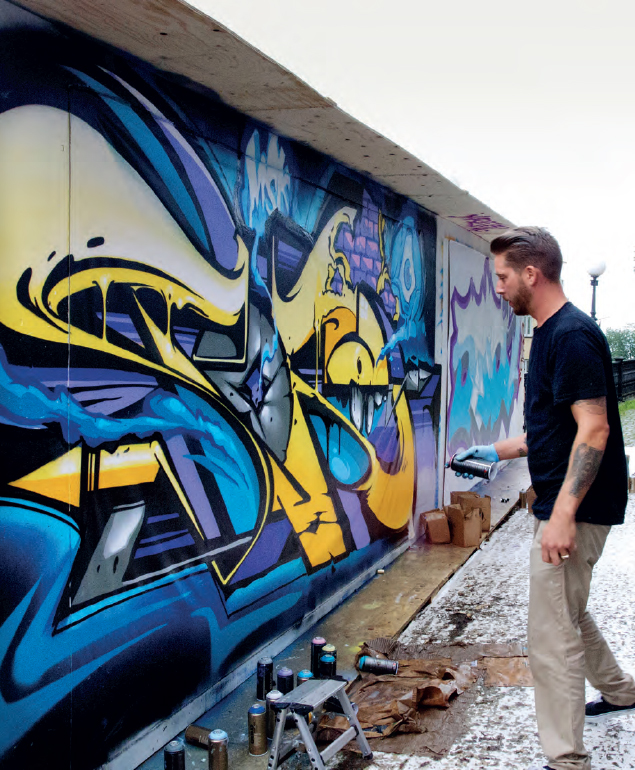
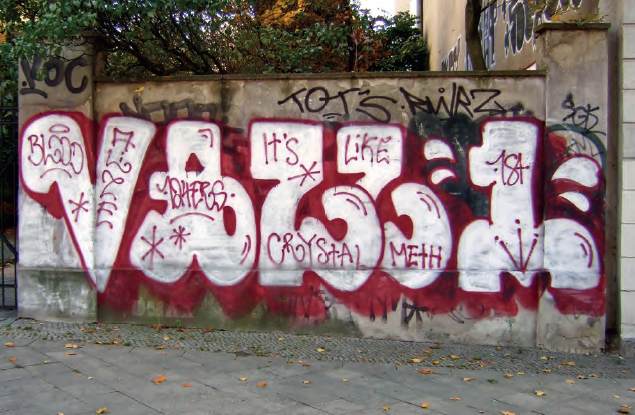
Vazz 1 does his version of the 1970s New York style. Berlin 2007
STYLE EVOLUTION
You could call graffiti street calligraphy. Graffiti style is a mixture of curves and sharp angles that make the letters swing. Its formal language is easiest to follow in a tag. In pieces, colours and outlines can hide the basic shape of the letters.
A tag is one-dimensional. This means it is created by a line. Throw-ups and pieces are two-dimensional. They have double contours with a space that creates the volume. The intervals, the surface of the piece, are called girders. All letters are built using basic shapes: one or several girders create the letter.
You can subdivide the letters into two basic styles. One is a logical and precise architectonic style hailing from New York. It was developed by writers like Phase 2, Lee and Dondi. In Europe, the architectonic style was further developed by Bando and Shoe in the mid-80s. They separated the letters from each other, and kept the word together using arrows and external bars. The letters often had enlarged upper parts.
The architectonic style is distinguished by the fact that the parts of the letter are made of overlapping girders. It is a style that could be built using planks. That the style is logical means, for instance, that the eye of an A ends up along the girders. Architectonic style is largely based on logic.
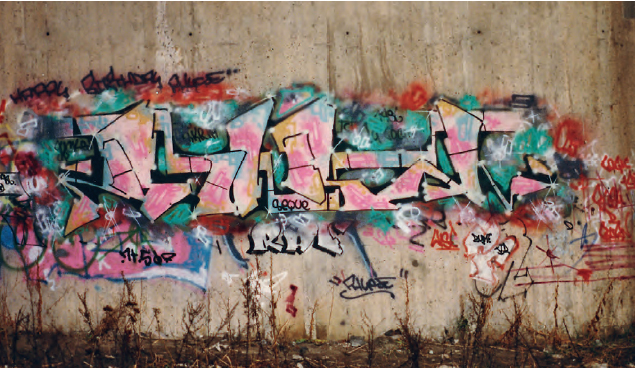
Burn by Seque, Stockholm 1986. An example of the Bando style that spread over Europe
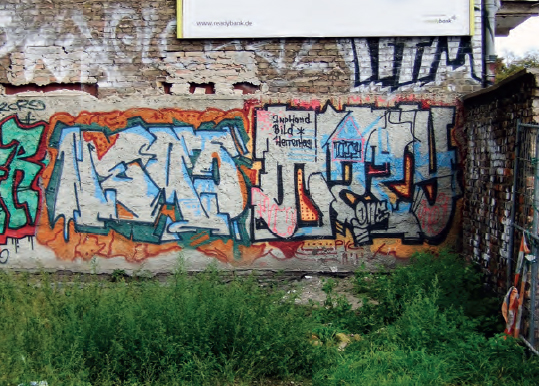
Nemo and Dizzy experimenting with 1980s style influences. Berlin 2007
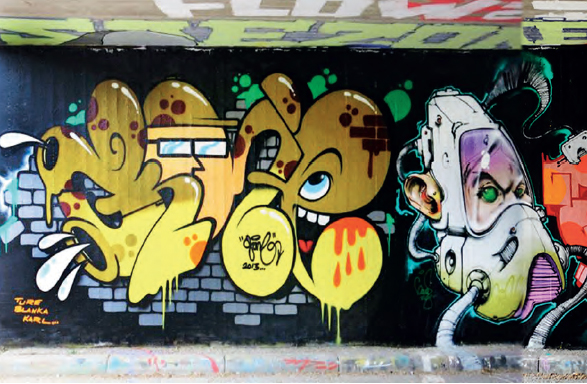
Gone from Sweden does a round architectonic style. The eye in the letter E follows the girders. Character by Gouge
The architectonic style is often angular, but can also be rounded. A good example of that style is the classic logo for the Disney comic Donald Duck.
The other is a flowing organic style that can be illogical. This means that the writer takes more liberties with letter shapes. In an illogical A, the eye ends up where the writer chooses and thinks it fits best. The girders can be more fluid and loose in shape, and the letters can be built in entirely unexpected ways. The organic style can also be expressionistic or naivistic.
This style was practised by many New York writers in the early 70s. But this was due to ignorance of letter construction. In the early 90s, it was reborn in Scandinavia, when writers like Aman, Hiv and Ribe revolted against logical style and searched for inspiration among the roots of graffiti. Crews like NG and CP from Sweden and UT from Berlin became known for painting letters that were considered controversial and ugly.
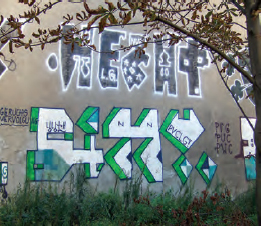
Next page
